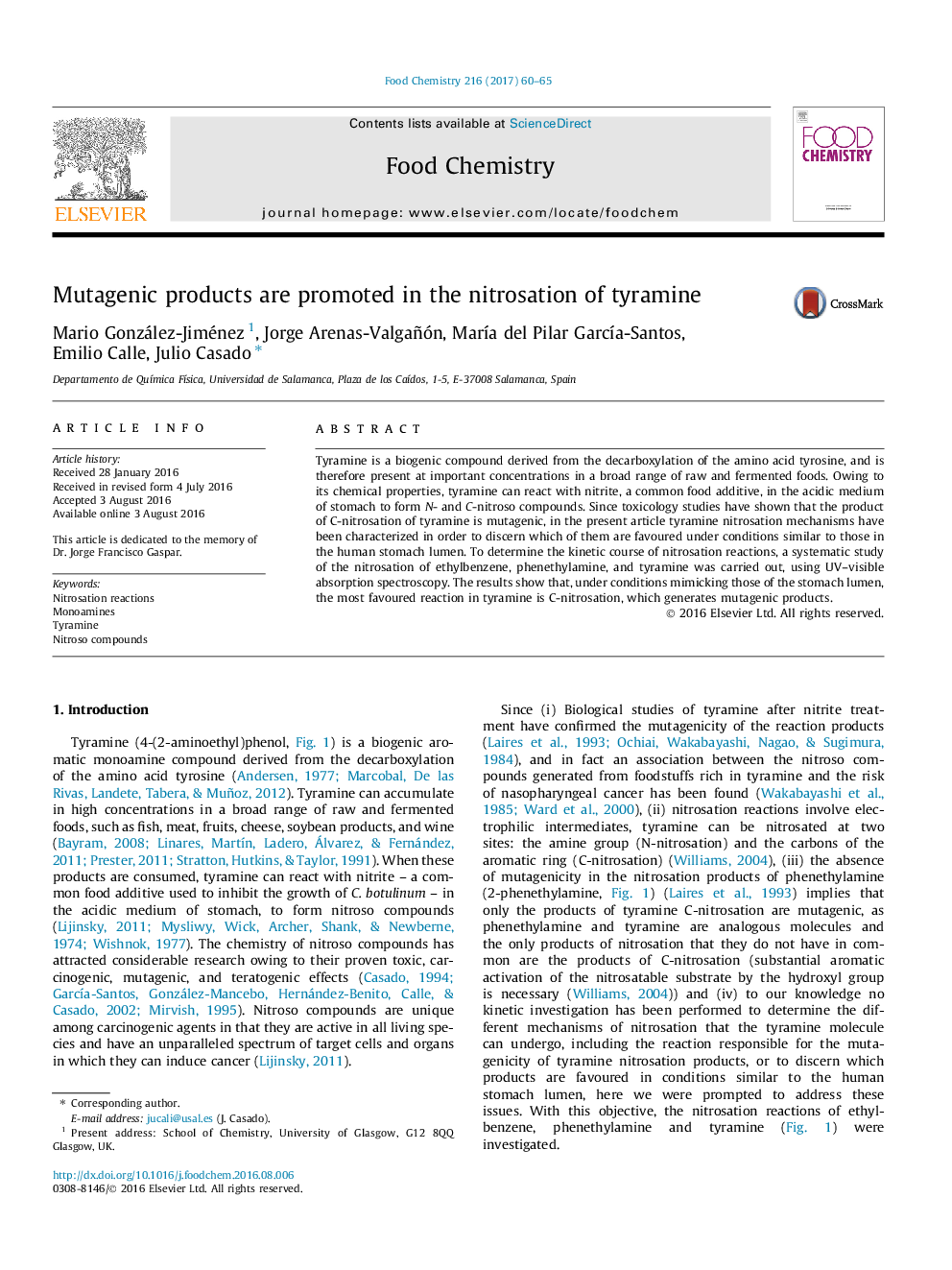| Article ID | Journal | Published Year | Pages | File Type |
|---|---|---|---|---|
| 1183049 | Food Chemistry | 2017 | 6 Pages |
•Tyramine can naturally undergo N- and C-nitrosation in the human stomach.•Only the products of C-nitrosation of tyramine are shown to be mutagenic.•The mechanisms of N- and C-nitrosation of tyramine were determined.•Under the conditions of the stomach, C-nitrosation is significantly faster.
Tyramine is a biogenic compound derived from the decarboxylation of the amino acid tyrosine, and is therefore present at important concentrations in a broad range of raw and fermented foods. Owing to its chemical properties, tyramine can react with nitrite, a common food additive, in the acidic medium of stomach to form N- and C-nitroso compounds. Since toxicology studies have shown that the product of C-nitrosation of tyramine is mutagenic, in the present article tyramine nitrosation mechanisms have been characterized in order to discern which of them are favoured under conditions similar to those in the human stomach lumen. To determine the kinetic course of nitrosation reactions, a systematic study of the nitrosation of ethylbenzene, phenethylamine, and tyramine was carried out, using UV–visible absorption spectroscopy. The results show that, under conditions mimicking those of the stomach lumen, the most favoured reaction in tyramine is C-nitrosation, which generates mutagenic products.
